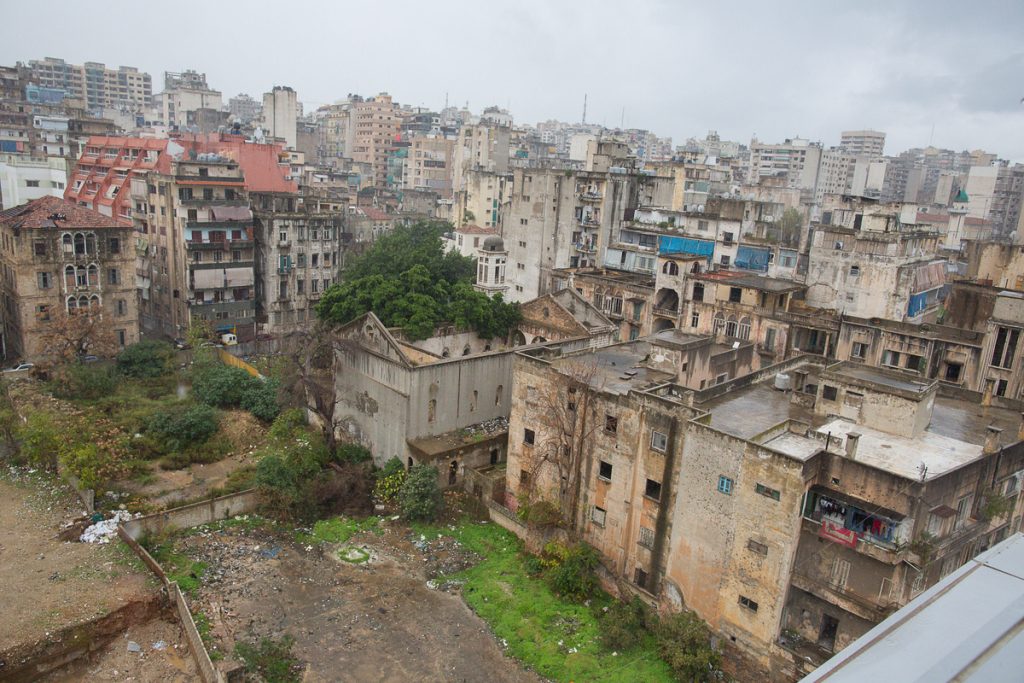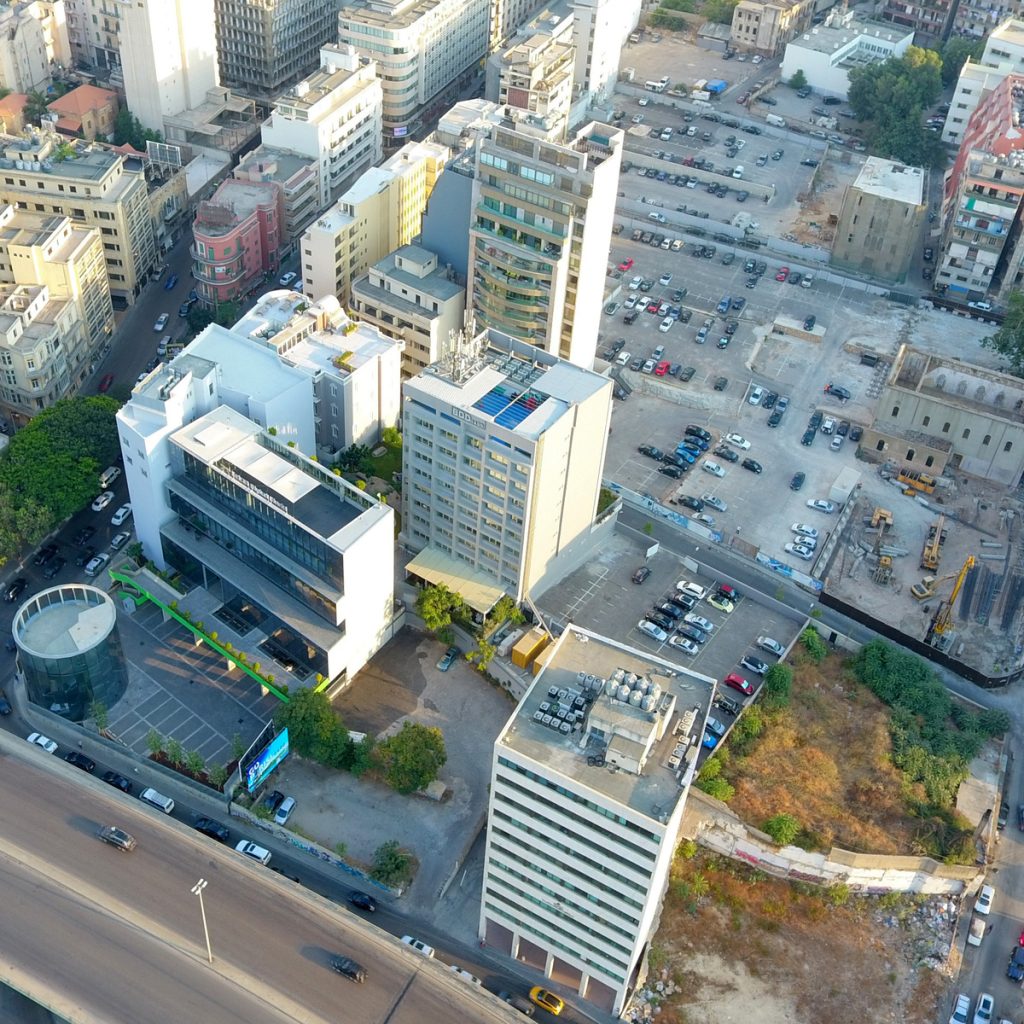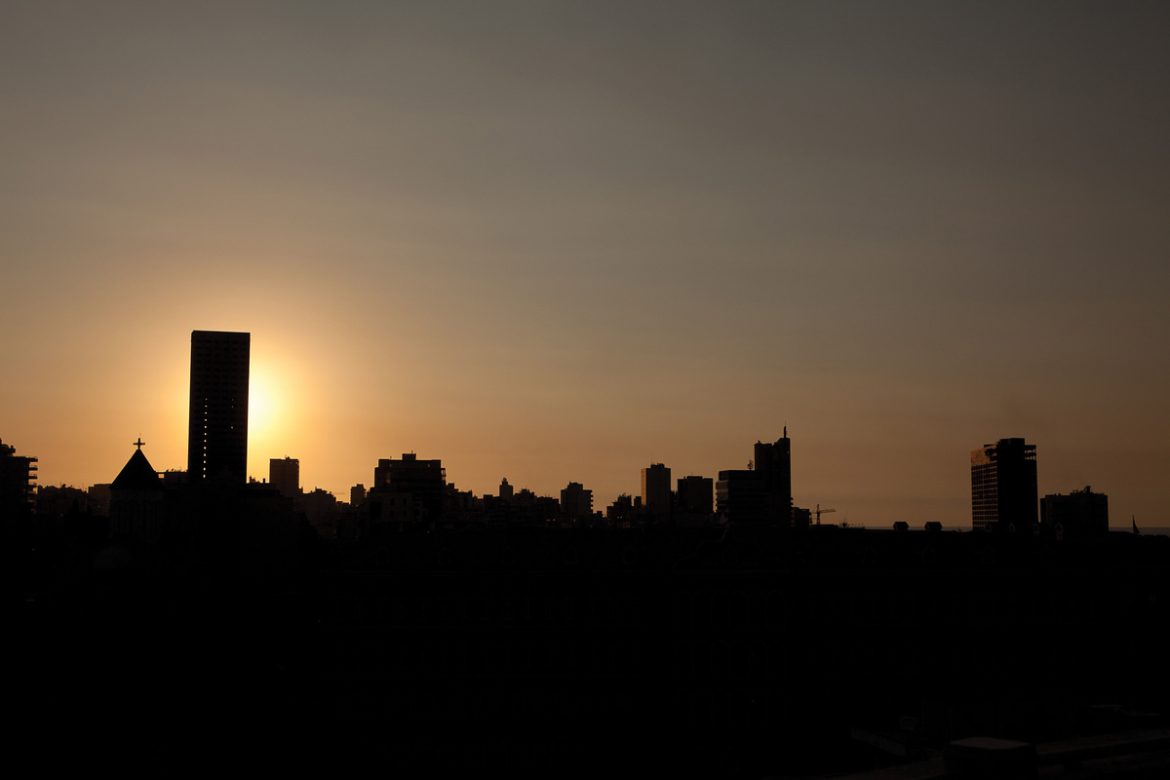The critical acceleration of Lebanon’s deeply entrenched housing crisis can be easily attributed to the degradation of the country’s building stock due to the Hezbollah – Israel war and Israeli invasion of 2024. One year after the escalation of Israel’s war against national territory and nine months on from the aggressive neighbor’s violent assertion of continual military dominance over the southern Lebanese lands in their self-defined interest zone, occupation has not ended, notwithstanding the highly touted October 2025 ceasefire agreement in occupied Gaza. From the perspective of national housing and livelihoods, enemy presence in Lebanon reigns on in continued destruction and hidden displacement.

What is documented from last year’s mayhem is that building stock was victimized in this conflict more than any other aspect of the Lebanese economy and livelihoods. Some $14 billion worth of economic losses and damages were recorded in the aftermath of this latest confrontation. This aggregate devastation was the outcome of a period of three-month intense war that occurred last fall in the envelope of a 15-month conflict between October 8, 2023 and December 20 of 2024. Further damages and economic losses—not yet captured in detail—have since dragged on, occurring in the nine months of the year to date.
Of these 15 months of Lebanese losses and destruction, 51.5 percent were counted by the World Bank in the category of economic losses. On top of these $7.2 billion, the World Bank’s Rapid Damage and Needs Assessment for Lebanon (RDNA) estimates that, housing “is the most affected sector with damage costs amounting to US$4.6 billion, or 67 percent” of $6.8 billion in damages suffered by the Lebanese until the end of last year.
Moreover, reconstruction needs in the housing sector – representing $6.3 billion, or 57 percent of total conflict recovery costs of an estimated $11 billion that are required between 2025 and 2030 – are estimated to substantially exceed the $4.6 billion of damages and destruction inflicted on building stock.
Clarifying the reconstruction outlook
In assessing the heavy socioeconomic impact on the housing sector as well as the resulting needs, it is necessary to avoid a common misperception that property is wealth. Concentration of wealth in luxury properties and large real estate holdings certainly exists in Lebanon and is highly inequitable. But associating high levels of ownership of first residences in Lebanon with wealth, is incorrect. Thus, the property landscape attribute of distributed property ownership, which is actually comparatively widespread in society, cannot be equated with social resilience.
The gap between people’s home ownership and their perception of own economic wellbeing has widened since 2020. In a 2023 survey conducted by pollsters IPSOS on behalf of German Konrad Adenauer Stiftung, 70 percent of respondents in a representative sample indicated that they own their home (residential unit). Yet according to the survey, a majority – 58 percent of respondents (albeit with substantial regional differences) – describe their living conditions as “poor or very poor”, versus 35 percent considering them “average” and 7 percent who say their living conditions are “good or very good”.
Conducted shortly before the country was exposed to the shock of the October 7, 2023 events in neighboring Israel and without inquiring about expectations of new conflict shocks, the survey sought to map the impact of the then-ongoing economic and financial crisis on the socioeconomic and political landscape of Lebanon. Already months before escalating shocks of conflict started to shake the region, Lebanon’s socioeconomic situation was under such pressure that home ownership, even free of housing loan obligations, could not be regarded as viable store of value that is readily accessible via well-functioning property and mortgage markets.
In the larger setting of the post-economic-meltdown, the post-war situation of fiscal insolvency and lingering political bankruptcy, of peak multidimensional poverty and galloping inequality, the socioeconomic situation of 2025-35 is not stable, even if the overall economy has started to be on a recovery track. The shouldering of reconstruction costs of devastated housing by private households – despite some governmental easing of duties for owners of affected properties and despite a few new lending schemes in real estate finance – will be prohibitive for many years.
An immobile status quo gets violently disrupted
A second notable attribute of the Lebanese housing sector is a mixture of speculative pockets with overall stagnation. This dichotomy can be observed over the three decades since the end of the country’s internal war in 1992. The 70 percent rate of home ownership reported from the 2023 survey respondents, is actually congruent with the rate of owner-occupied housing units reported years earlier by researchers for the Central Administration for Statistics (CAS).
CAS surveys in 2007 and 2009 estimated the number of primary residences at 930,500, with a 2 to 1 split between apartments and single-family houses. According to the 2004 CAS census of buildings, 71 percent of units were owned by the people living in them. Moreover, a 2012 CAS paper on Population and Housing in Lebanon says, the country had slightly over 408,500 buildings, including single homes and multi-unit ones. In an indication of value-restricting factors, the age of the building stock was reported as high, with only 21 percent of units younger than 15 years at time of the research.
The 2025 RDNA estimates on the national housing stock of 1,650,000 units in 2024 is not easy to reconcile with CAS surveys or the correlated assumptions of national population and number of persons per household. One thing this could mean is that there is incongruity between damage estimates and reality: the destruction/damage count of 162,900 units is likely in the double-digit percent, not the 10 percent approximation of the World Bank.
The World Bank, echoing widespread lack of trust in state capacity to fund recovery, opines that more than two thirds of the rebuilding burden is expected to fall on private citizens (or, as others speculate, non-state actors and Arab donors), not on the state. In the RDNA lingo, “Given Lebanon’s predominantly private housing sector … it is estimated that around 70 percent of the infrastructure reconstruction needs (around US$ 4 billion) are expected to be privately financed. The remaining 30 percent (around US $2 billion) … are expected to be financed by the public sector to support the poorest and most vulnerable homeowners.”
How the most vulnerable home-owners will be defined and if they will enjoy the necessary political currency and unbiased administrative support for their plights, is probably a mere practical detail in the perspective of a macro-report. Given its repeated and always overburdening post-conflict reconstruction needs over almost four decades – in 1992, 97/8, 2006, and 2024/25 – the country has previously ventured into experiments from private sector investments into downtown Beirut to reliance on Arab and Western donors and acceptance of militia-controlled construction companies. What the Lebanese polity found out through these reconstruction and development ventures is that they unfailingly come with chains of expectations and obligations. They limit the polity from exercising true sovereignty and tie it to market logic and political logic of external powers.
Scenarios for escaping a perma-crisis of housing
The country faces simultaneous new challenges of rebuilding damaged or destroyed homes in half the governorates while also having to develop climate resilience in the highly urbanized nation. Failing to meet these challenges risks further exacerbation of the acute state of emergency and danger of the under-acknowledged housing perma-crisis.

In an upside risk, however, developing climate resilience is seen by some as the last best chance for national action to improve urban habitats and find social living solutions. This historic opportunity is spurred on by the housing crisis’ intensity and the urgency of climate action in a country that, according to the Ministry of Environment, is much more a victim of climate problems than a proliferator.
When acknowledging that the Lebanese polity’s old “chaos-as-usual” approach to housing is not viable for anything, three development vectors vie for priority in housing the Lebanese population in dignity and with improved sustainability.
The first vector is civic initiatives, efforts of recovery and rebirth of heritage, including 20th century urban heritage. It is a consistent vector of post-conflict support as previously evidenced by determined responses to the reconstruction needs of neighborhoods hit by the 2020 Beirut Port Blast.
The vector has been noticeably active in 2025. In a pointillist impression from this summer, new projects for revitalizing Beirut’s Grand Theater and Mar Mikhael Station have been launched with civil society enthusiasm and international support by UNESCO and the Emirate of Sharjah in the former, and UNESCO and Italy in the latter project. Mediterranean neighbor country Italy moreover sponsored a September/October exhibition and series of discussions on urban renaissance projects, an initiative that Italian ambassador Fabrizio Marcelli claims was conceptualized last December, just after the end of large-scale hostilities in the 2024 war.
Civil, non-profit, private, and municipal projects are currently in the process of offering positive impulses of living urbanity in Lebanon. But expecting their scope to change cityscapes beyond investments a few thousand to single-digit million dollars – small change when compared to investment amounts that large commercial developers and political developers like to throw around – is high-risk. It is a niche development vector that attracts young innovators and altruists.
The second development vector demanding national attention is the foreign investments and externally funded reconstruction and development vector. This ethically and politically ambiguous vector has been hotly debated in the post-war environment. Experiences with this model and concerns over vague new concepts that were proposed and rumors that were pushed in recent months, have caused immediate and multi-faceted backlash. Still, the possibility of new hare-brained investment schemes and political dependencies stands in the room.
Climate response as hope for urban rescue
The third development vector is national ownership of the development process under integration into a global effort of tackling climate risk. This vector is a high minded sustainability scenario affiliated with the Nationally-Determined-Contributions (NDC) process devised under the Paris climate agreements of 2015. It serves two purposes: Lebanon can pursue sustainable and resilient urbanity by way of the country’s newest climate action policy package.
The official launch of the climate action policy package for Lebanon was held, coincidentally, on the first anniversary of Israel’s escalation of attacks on Lebanon in the morning of September 23, in the regally chandeliered hall of the Grand Serail. Short, easily quotable bullet point lists and fact sheets were handed out before short official speeches in a Lebanese political gathering. The circulated handouts, printed promises for post-conflict recovery through climate action, trumpeted the country’s revised nationally determined contributions (NDC 3.0) as “practical tool for national recovery and hope”.
Climate crisis as hidden chance?
The multi-pronged challenge of making their building stock future proof for towering climate risk and the digital era is universal for nations with comparatively long histories of habitation and urban growth in the industrial age. This is demonstrated by the difficulties of meeting climate risk mitigation needs in prosperous EU countries.
In Lebanon, rehabilitation of urban water networks is mentioned in the Climate package prepared for the next Conference of Parties (COP) meeting that will convene this November in Belem, Brazil. It is in the package under the header of “building resilient cities,” prepared in conjunction with an updated set of Nationally Developed Contributions (NDC 3.0).
NDC 3.0 stipulate the desire to achieve 22 percent reduction in Green House Gas (GHG) emissions by 2035 in an unconditional (nationally self-funded) scenario and 33 percent in a conditional one (meaning if climate action is supported by international aid). It further declares a target of reaching 20 to 35 percent of renewable energy by 2035.
The previous 2020 iteration of the same goals, which saw Lebanon submit its NDC 2.0 set admirably early, stipulated targets of 20 percent (unconditional) and 31 percent (conditional) for GHG reduction and 18 percent (unconditional) or 30 percent (conditional) in electricity generation from renewable sources by 2030.
According to the climate watch NDC tracker by US-based non-profit World Resources Institute, Lebanon’s NDC 3.0 are improved in terms of clarity and transparency as well as adaptation but do not represent a strengthening of 2030 targets.
The fact sheet of short-term targets includes upgrading drainage networks, restoring degraded ecosystems, and integrating climate risk assessment in the management of cities.
The willful intensity of its meeting’s opening presentations had proponents from involved agencies explaining the policy package by way of an 3.5 minute animation—catering to the attention span of local politicos, jaded journalists, and mundane stakeholders.
The fact sheets declared that prospective economic benefits of determined climate action would be positive for the economy and result in GDP growth by 2050 that could be 40 or 50 percent higher than in a business-as-usual (BAU) scenario. The printed declaration and fact sheet for Lebanon’s NDC3.0 and its short and long-term low emissions development strategy explicitly mentioned the imperative of developing climate-resilient cities.
A paltry $12.8 billion needs to be invested into climate resilience by 2035, according to the projections of the Ministry of Environment and UNDP. The provided information on finance sketched out well-known theoretical funding pathways and mentioned the Luxembourg-domiciled Lebanon Green Investment Facility (LGIF) that was announced in 2024 in collaboration with the Cedar Oxygen Fund.
The brief outline was, however, short on how and when the urgent transition to urban climate resilience would be legislated, financed, incentivized and implemented. The national plan included the short-term targeting of 2030 and long-term targeting of 2050 for aspirations such as reducing losses in the water system to the point of sustainable supply, 100 percent wastewater treatment and reuse by 2050, and 100 percent electrification of urban and rural public transport.
Still, pushing for climate action points laudably to the needed aspiration of national sustainability. It is a conceptually viable alternative to a chaos-as-usual future of perma- and poly-crises in the crucial urbanity of Lebanon.
Whatever the cost that is not yet reconciled, whatever the political obstacles, whatever the external threats to Lebanese peace, the consequence of inaction today will be impossibly grim for the grandchildren of the current political leadership generation.

